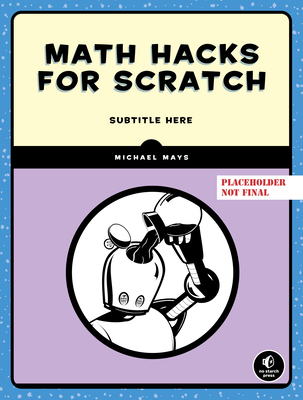
Math Hacks for Scratch: Unlock the Power of Math with Scratch Programming
Michael Mays
Questions & Answers
Scratch programming facilitates mathematical exploration and understanding of number theory concepts like divisibility, primes, and factorization by allowing users to visualize and interact with these abstract ideas through tangible, interactive projects. By creating Scratch programs, users can:
-
Visualize Divisibility: Programs can demonstrate divisibility by using loops and conditionals to check if a number is divisible by another number, providing immediate feedback and visualization of the concept.
-
Identify Primes: Scratch can be used to test for prime numbers through trial division, allowing users to see the process of elimination and understand why certain numbers are prime.
-
Explore Factorization: Users can write programs to factorize numbers into their prime components, illustrating the Fundamental Theorem of Arithmetic and the unique factorization of integers.
-
Interact with Patterns: Scratch's ability to generate sequences and patterns helps users understand the relationships between numbers and identify patterns in sequences, such as the Fibonacci sequence.
-
Experiment with Algorithms: By implementing algorithms like the Sieve of Eratosthenes or Euclid's algorithm for GCD, users can learn about algorithmic efficiency and the practical application of number theory concepts.
Overall, Scratch provides a dynamic and engaging platform for exploring number theory, making complex concepts more accessible and fostering a deeper understanding through hands-on learning.
The book "Math Hacks for Scratch®" explores various mathematical principles and algorithms, implementing and visualizing them using Scratch programming. Key concepts include:
- Number Representation: The book delves into how computers represent numbers, including binary and decimal systems, and the limitations of floating-point arithmetic.
- Divisibility and Primes: It introduces divisibility rules, modular arithmetic, and prime number identification, using the Sieve of Eratosthenes and the Euclidean algorithm for finding the greatest common divisor (GCD).
- Prime Factorization: The book explains the Fundamental Theorem of Arithmetic and demonstrates prime factorization techniques, including Fermat's factorization method.
- Sequences and Patterns: It explores sequences, including the Fibonacci sequence and figurate numbers, and uses Scratch to visualize these patterns.
- Arrays: The book introduces two-dimensional arrays, like Pascal's Triangle, and demonstrates how to manipulate and visualize them in Scratch.
- Cryptography: It covers basic encryption techniques, such as Caesar ciphers and modular arithmetic, and shows how to implement and crack these codes using Scratch.
- Counting Problems: The book explores combinatorics, including Catalan numbers and partitions, and uses Scratch to count and visualize these patterns.
Scratch is used to create interactive programs that visualize these concepts, allowing users to experiment with the algorithms and see the results in real-time. This hands-on approach helps learners understand the mathematical principles more deeply.
The book "Math Hacks for Scratch®" leverages Scratch's block-based programming interface to teach mathematical thinking and problem-solving by allowing users to visualize and manipulate mathematical concepts through interactive projects. By using Scratch's drag-and-drop blocks, readers can create programs that demonstrate and explore mathematical ideas, such as number representation, divisibility, prime numbers, and cryptography. This approach makes abstract mathematical concepts concrete and tangible, encouraging experimentation and discovery. The book guides readers through creating Scratch programs that solve problems, helping them develop logical reasoning, algorithmic thinking, and the ability to apply mathematical principles in practical scenarios. This hands-on learning process fosters a deeper understanding of mathematics and enhances problem-solving skills.
Scratch, while powerful for mathematical exploration, has limitations and challenges. Its finite storage space restricts the size of numbers it can accurately represent, and its integer arithmetic can break down beyond a certain point. Scratch also lacks built-in support for certain mathematical operations, like working with large numbers or performing complex calculations on strings.
The book "Math Hacks for Scratch" addresses these issues by teaching readers about Scratch's internal number representation and limitations, offering workarounds like using lists to represent large numbers and programming custom arithmetic operations. It also introduces mathematical concepts and algorithms that can be implemented in Scratch to overcome these limitations, making the exploration of math more accessible and engaging. The book's hands-on projects and challenges encourage readers to learn how to use Scratch effectively for mathematical exploration, even with its inherent constraints.
The book encourages readers to extend their mathematical knowledge and programming skills beyond Scratch by suggesting exploration of other programming languages and mathematical problems. It recommends Python and Mathematica for their support of arbitrary-precision arithmetic, which is useful for number theory exploration. The book also directs readers to Project Euler for computational challenges and the MAA Convergence journal for open access problems. Additionally, it suggests searching for math challenges and games on Scratch and exploring the MAA Convergence journal for more problems.